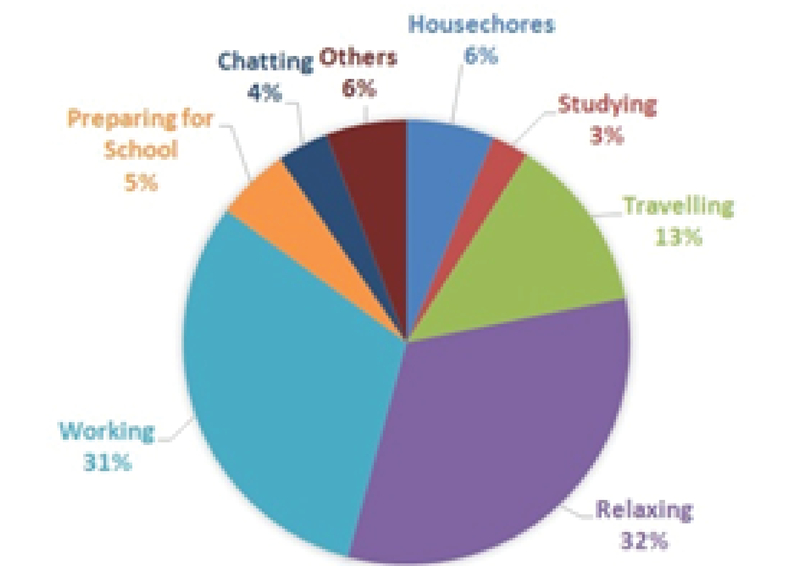N-Gen, the Small Share That Continues to Listen: Reports from Media-Use Online Diaries of Teenage Radio Listeners
DOI:
https://doi.org/10.18502/kss.v2i4.875Abstract
The rise of television and new media have caused decline in the number of radio listeners. In Indonesia, the number of studies that focus on radio also has plummeted. The nature of radio broadcasting reach, as well as the decline in the number of listeners, has made audience research difficult and expensive. This paper attempts to fill this gap. This paper examines young radio listeners’ media habits in Solo – a city in Java Island Indonesia – in detail. Employing daily journals, 30 teenagers who admitted still listening to the radio agreed to participate in the research. Among the small share of teenage radio listeners aged 14-19 in the city, only about 56% reported listening to the radio during one week that represented the data collection period. Herein, we provide details on the stations and on the talk and music formats that the subjects listened to as well as places and listening motivation and listening behaviors. Suggestions for further research are also discussed.
References
A. B. Albarran, T. Anderson, L. G. Bejar et al., “What happened to our audience? Radio and new technology uses and gratifications among young adult users,” Journal of Radio Studies, vol. 14, no. 2, pp. 92–101, 2007.
J. Bynner and S. Ashford, Teenage Careers and Leisure Lives: An Analysis of Lifestyles, Social Statistics Research Unit, 2013.
T. Coleman and B. Amy, “Media and the Well-being of Children and Adolescents,” in Youth Adolescence, and. Jordan Daniel Romer, Ed., vol. 43, pp. 2083–2087, Media and the Well-being of Children and Adolescents, 2014.
J. O. Escardibul, T. Mora, and A. Villarroyaa, Peer effects on youth screen media consumption in Catalonia (Spain), Business Media, New York, 2013, 37:185-201.
P. F. Gullifor, “Family Communication Patterns and Adolescent Use of Radio,” Journal of Radio Studies, vol. 1, no. 1-2, pp. 1–14, 1992.
H. Irianto and T. Mardikanto, “Metoda Penelitian dan Evaluasi Agribisnis., Surakarta,” Jurusan/Program Agribisnis UNS, 2011.
D. Kaplan, “Programming and editing as alternative logics of music radio production,” International Journal of Communication, vol. 7, no. 1, pp. 759–779, 2013.
S. Landau and B. S. Everitt, A Hand Book Statistical Analyses Using, SPSS., London, Chapman & Hall/CRC Press LCC, 2004.
H. Manns, “Youth radio and colloquial Indonesian in urban Java,” Indonesia and the Malay World, vol. 42, no. 122, pp. 43–61, 2014.
E. Mitchelstein and P. J. Boczkowski, “Online news consumption research: An assessment of past work and an agenda for the future,” New Media and Society, vol. 12, no. 7, pp. 1085–1102, 2010.
M. A. Morissan, A. Corry, and F. Hamid, Metode Penelitian Survey. Jakarta: Kencana.
G. Mytton, Handbook on Radio and Television Audience Research, BBC World Service, London, 1992.
T. K. Naab and A. Schnauber, “Habitual Initiation of Media Use and a Response- Frequency Measure for Its Examination,” Media Psychology, vol. 19, no. 1, pp. 126– 155, 2016.
P. N. Negara and N. N. Amal, “Media habit: Remaja pendengar radio usia 14-19 tahun di Kota Solo,” Jurnal Komunikasi Massa, vol. Vol 1, 2015.
V. J. Rideout, U. G. Foehr, and D. F. Roberts, “Generation M: Media in the lives of 8-to18-year-olds. Henry J. Kaiser Family Foundation Study,” Eric, 2010.
A. M. Rubin and S. Windahl, “The Uses and Dependency Model of Mass Comunication,” in Critical Studies in Mass Communication, 3: 195 Sugiyono, Alfabeta, Bandung, 1986.
A. M. Rubin and S. Windahl, “The uses and dependency model of mass communication,” Studies in Media Communication, vol. 3, no. 2, pp. 184–199, 1986.
J. C. Tsao and S. Steffes-Hansen, “Predictors for internet usage of teenagers in the United States: A multivariate analysis,” Journal of Marketing Communications, vol. 14, no. 3, pp. 171–192, 2008.
W. Wood, J. M. Quinn, and D. A. Kashy, “Habits in everyday life: Thought, emotion, and action,” Journal of Personality and Social Psychology, vol. 83, no. 6, pp. 1281– 1297, 2002.

